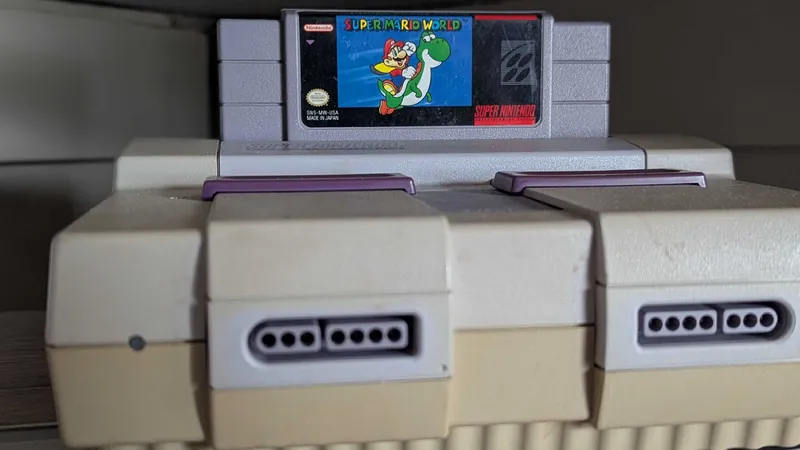
The Mysterious Speed Surge of Vintage Super Nintendo Consoles: What Gamers Need to Know!
2025-03-14
Author: Yan
In a peculiar turn of events, some vintage Super Nintendo (SNES) systems are reportedly running faster today than they did when they first hit store shelves 35 years ago. While most hardware tends to degrade over time, a dedicated community of retro gaming enthusiasts is uncovering intriguing findings, sparking debates about the implications for classic titles like Super Mario Kart and Super Metroid, especially in the realm of speedrunning.
The Cause of the Speed Surge
The crux of this baffling phenomenon lies within the 16-bit system's audio processing unit (APU), which operates on a 24.576 MHz clock sourced from a ceramic resonator. This component, contrary to expectations, seems to gain speed as the consoles age. Dedicated players have embarked on an unconventional experiment to map out this speed change, testing their vintage SNES consoles under varying temperatures—some even resorting to chilling them in freezers to gather data.
Surprising Findings from Investigations
According to retro gaming expert Alan "dwangoAC" Cecil, Nintendo's original specifications stated that the digital signal processor (DSP) sample rate should hit 32,000 Hz. Yet, a 2007 investigation unveiled a surprising deviation, revealing that older consoles were achieving rates around 32,040 Hz. Fast forward to 2025, and the numbers are even more astounding, with averages soaring to approximately 32,076 Hz and some of the fastest units clocking in at 32,182 Hz.
Implications for Gameplay and Speedrunning
But what does this mean for the SNES experience? While the CPU clock driven by a quartz crystal remains constant, the acceleration of the APU indicates that game audio could be slightly faster and may even present at a higher pitch. When it comes to the gameplay itself, the changes might only become apparent during loading screens. As highlighted by 404 Media, transitions between rooms in a game like Super Metroid could potentially happen more swiftly, courtesy of the faster loading of audio data from the APU.
Speedrunning Challenges
So, does this translate to real advantages for speedrunners aiming to break records? Cecil remains skeptical, noting that the time savings might not even equate to a single frame across an entire playthrough. However, if the trend of rising APU rates continues, it could become substantial, particularly for tool-assisted speedrun bots. These bots, which assist gamers in discovering optimal routes and exploiting gameplay mechanics, may find the changes advantageous in their quest for unprecedented speedrunning achievements.
The Future of SNES
Looking ahead, the future of the SNES might hold even more surprises. Could the ceramic resonator's quirks lead to even stranger phenomena in the years to come? As the fascination with retro gaming continues to grow, one can only imagine how these vintage consoles will evolve—or if they will endure long enough to surprise future generations of gamers. Don't miss out on this thrilling saga in gaming history, where nostalgia meets unexpected innovation!


 Brasil (PT)
Brasil (PT)
 Canada (EN)
Canada (EN)
 Chile (ES)
Chile (ES)
 Česko (CS)
Česko (CS)
 대한민국 (KO)
대한민국 (KO)
 España (ES)
España (ES)
 France (FR)
France (FR)
 Hong Kong (EN)
Hong Kong (EN)
 Italia (IT)
Italia (IT)
 日本 (JA)
日本 (JA)
 Magyarország (HU)
Magyarország (HU)
 Norge (NO)
Norge (NO)
 Polska (PL)
Polska (PL)
 Schweiz (DE)
Schweiz (DE)
 Singapore (EN)
Singapore (EN)
 Sverige (SV)
Sverige (SV)
 Suomi (FI)
Suomi (FI)
 Türkiye (TR)
Türkiye (TR)
 الإمارات العربية المتحدة (AR)
الإمارات العربية المتحدة (AR)